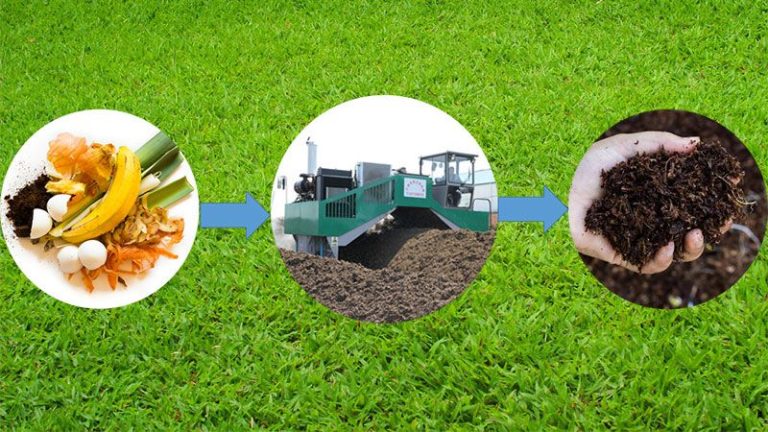Diy Organic Garden Pest Remedies: Natural Solutions For Common Problems
As many gardeners know, pests can be a major frustration, damaging plants and ruining crops. Organic pest control provides an effective and environmentally-friendly alternative to harsh chemical pesticides. This guide will provide an overview of common garden pests and natural, organic solutions for managing them.
Introduction
Organic pest control utilizes natural ingredients and methods to deter or eliminate pests, while minimizing harmful effects. Organic pesticides are derived from plants, minerals, and other safe sources, making them far less toxic than synthetic chemicals. Popular organic pest control techniques include plant-based sprays, biological controls like beneficial insects, and physical barriers.
Some of the most troublesome garden pests include aphids, Japanese beetles, slugs, and fungal diseases. While chemical pesticides may seem like a quick solution, they can harm populations of beneficial insects, pollute soil and waterways, and leave toxic residues on food crops. Organic remedies work with nature to create a healthy ecosystem, rather than disrupting the natural balance.
This guide will provide an overview of common garden pests and natural, organic solutions to manage them safely and effectively. Organic pest control helps gardeners grow robust, thriving plants while protecting the environment.
Identifying Common Garden Pests
Some of the most common pests that can wreak havoc in home gardens include:
Aphids
Aphids are small, soft-bodied insects that feed by sucking sap from plants. Signs of an aphid infestation include curled, deformed leaves, stunted plant growth, and sticky honeydew on plants. Aphids can spread viral diseases between plants (“Getting to Know Common Garden Insect Pest Groups and Their Associated Signs of Plant Damage,” 2016).
Japanese Beetles
Japanese beetles are metallic green and copper insects that chew holes in plant leaves. They especially love roses, beans, grapes and raspberries. Japanese beetles skeletonize leaves, leaving only the veins behind (“Garden Pests,” n.d.).
Squash Bugs
Squash bugs are brown, flat-backed insects that feed on squash and pumpkin plants. They suck sap, causing leaves to wilt and turn black. Heavy infestations can kill the entire plant (https://www.hgtv.com/outdoors/landscaping-and-hardscaping/16-common-garden-pests-pictures).
Tomato Hornworms
Tomato hornworms are large green caterpillars with white v-shaped marks and a horn on their rear. They chew through tomato plants, leaving behind defoliated stems. Hornworms can quickly decimate tomato plants.
Powdery Mildew
Powdery mildew is a fungal disease that covers leaves, stems and flowers with a white powdery coating. It stunts plant growth and reduces yields. Powdery mildew thrives in humid conditions.
Preventive Measures
There are several preventive measures gardeners can take to help deter pests without using harsh chemicals. Practicing crop rotation from season to season helps disrupt pest cycles. Rotating between plant families prevents the buildup of pests that target specific crops. For example, avoid planting tomatoes, potatoes, peppers or eggplants in the same area of the garden in consecutive years.
Companion planting can also help repel pests. Interplanting aromatic herbs like basil, thyme, or onions near vegetables can help mask their scent from pests. Other beneficial companion pairings include planting garlic or chives near carrots to deter carrot flies.
Strategic timing of plantings can avoid peak activity times for certain pests. Cabbage worms and Mexican bean beetles are most problematic in spring and early summer. Planting beans and cole crops in late summer or fall can largely avoid damage from these pests.
It’s also important to be vigilant and remove any plants showing severe pest damage or signs of disease. Discard severely damaged plants in sealed bags or containers to prevent spread. Removing diseased plants early helps prevent establishment of pest populations that can overwinter in the garden bed.
Physical Barriers
Physical barriers can be very effective at preventing pests from reaching plants in an organic garden. Some common types of physical barriers include:
Row covers made from fabric or plastic sheeting are often used to protect plants from insect pests. According to CORE Organic, floating row covers can provide protection from various beetles, moths, and flies. Ensure proper ventilation so plants do not overheat under the covers.
Traps can help monitor and control pest populations. Sticky traps catch crawling insects like whiteflies. Pheromone traps use scent to lure insect pests into a container. Always check traps regularly to prevent captured pests from escaping. Refer to Dubois Agrinovation for more on trap crops as organic pest control.
Fences and netting can keep out larger garden pests like rabbits and deer. A fence needs to be at least 3 feet high to deter rabbits. For deer, a fence should be 8 feet or taller. Use tight mesh netting for maximum pest protection. Bury the bottom of the fence or netting to prevent pests from crawling underneath.
Biological Controls
Biological pest control relies on natural predators and microorganisms to control pests. This can be a very effective part of an organic pest management program.
Some examples of biological controls include:
Predatory Insects: Ladybugs, lacewings, and praying mantises will eat aphids, caterpillars, whiteflies, and other pests. You can purchase live beneficial insects to release into your garden. Over time, they will establish populations that provide ongoing control.
Bt Bacillus thuringiensis: This bacterial disease will kill caterpillars when they ingest it but is safe for other insects. It is available in various strains that target specific pests. Apply it according to label directions when caterpillars are actively feeding.
Beneficial Nematodes: These microscopic roundworms will kill soil-dwelling pests like fungus gnats, root weevils, and cutworms. Water them into the soil to control larvae and pupae in the soil. They are safe for plants and won’t harm earthworms.
By relying on natural predators instead of broad-spectrum chemical pesticides, biological controls help restore ecological balance to the garden without harming beneficial insects or pollinators.
Botanical Sprays
Botanical sprays rely on plant-based ingredients to deter and eliminate garden pests. Many of these sprays are non-toxic to people and pets yet effective against insects. Popular botanical spray ingredients include:
- Essential oils like peppermint, clove, and thyme oil can repel soft-bodied insects when mixed with water and sprayed directly on infested plants (Source 1).
- Insecticidal soaps made from potassium salts of fatty acids can penetrate soft insect bodies and kill common pests like aphids, mites, and thrips.
- Neem oil, derived from the neem tree, disrupts insects’ hormonal systems and deter them from feeding on plants. It’s effective against a broad range of pests including Japanese beetles and spider mites.
These natural botanical sprays often require multiple applications for full effectiveness but provide pest control without the use of harsh chemicals.
Organic Fungicides
There are several effective organic fungicides that can help prevent and treat common fungal diseases in the garden. Some popular options include:
Baking soda – A common household product that creates an alkaline environment that inhibits fungal growth. Mix 1 tablespoon baking soda with 1 gallon of water and spray plants weekly as a preventative.
Sulfur – Available as a dust or spray, sulfur has antifungal properties that can treat powdery mildew and other diseases. Follow label instructions for best results.
Copper – Copper soap or copper sulfate sprays interfere with enzymes in fungal cells. Use carefully as directed since copper can build up to toxic levels in the soil over time.
Always read and follow label directions when using organic fungicides. Monitor for improvements and reapply as needed. Combining preventative measures with early treatment can help minimize fungal diseases organically.
Repellents
Certain strong scents can help deter animals from entering your garden. Martha Stewart recommends planting pungent herbs like oregano around the perimeter of your garden to repel animals with the strong scent.1 Peppery spices like cayenne pepper or chili powder can also be diluted in water and sprayed onto plants, acting as an irritant to repel small mammals when they catch a whiff.1 You can also purchase predator urine, like coyote or fox urine, and apply it around the garden’s perimeter. The strong scent of a predator can frighten away animals like rabbits, squirrels, and deer.
Diatomaceous Earth
Diatomaceous earth (DE) is a naturally occurring siliceous sedimentary mineral compound from microscopic fossilized remains of diatoms. It has sharp edges that can cut and damage the exoskeleton of insects and other small invertebrates (Diatomaceous Earth – National Pesticide Information Center).
DE is an effective organic pest control method because it absorbs lipids from the waxy outer coating of insects, causing them to dehydrate and die. It is abrasive and absorptive, destroying an insect’s shell and causing it to lose bodily fluids and die from dehydration (Uses For Diatomaceous Earth).
DE is effective against common garden pests like ants, cockroaches, slugs, snails, earwigs, millipedes and silverfish. It can be applied as a dust by using an applicator bulb or puffer bottle. Apply a fine layer around plants, under pot rims, and other areas where pests travel. It is abrasive but not poisonous to mammals and pets.
DE provides an organic pest control option that is safe for humans and beneficial insects. It should be reapplied after rain or watering. DE works by causing insects to dry out, rather than poisoning them, an important consideration for organic gardening.
Conclusion
In summary, there are many effective organic remedies for dealing with common garden pests. Using a combination of preventive measures, physical barriers, biological controls, botanical sprays, and organic pesticides can help create a thriving organic garden free of harmful chemicals.
An integrated pest management approach that employs multiple organic control methods is key for long-term, sustainable success. Being vigilant, identifying problems early, and taking quick action using organic solutions allows gardeners to get ahead of potentially damaging infestations.
The benefits of organic pest control go beyond just having a healthy garden. Not using synthetic chemicals avoids contaminating soil, waterways, and food. It also prevents harm to important pollinators and beneficial insects. Organic methods create a balanced ecosystem where pests are kept in check naturally.
With some knowledge of common garden pests, an understanding of organic solutions, and a willingness to be proactive, any gardener can protect their plants while also supporting a cleaner environment.





